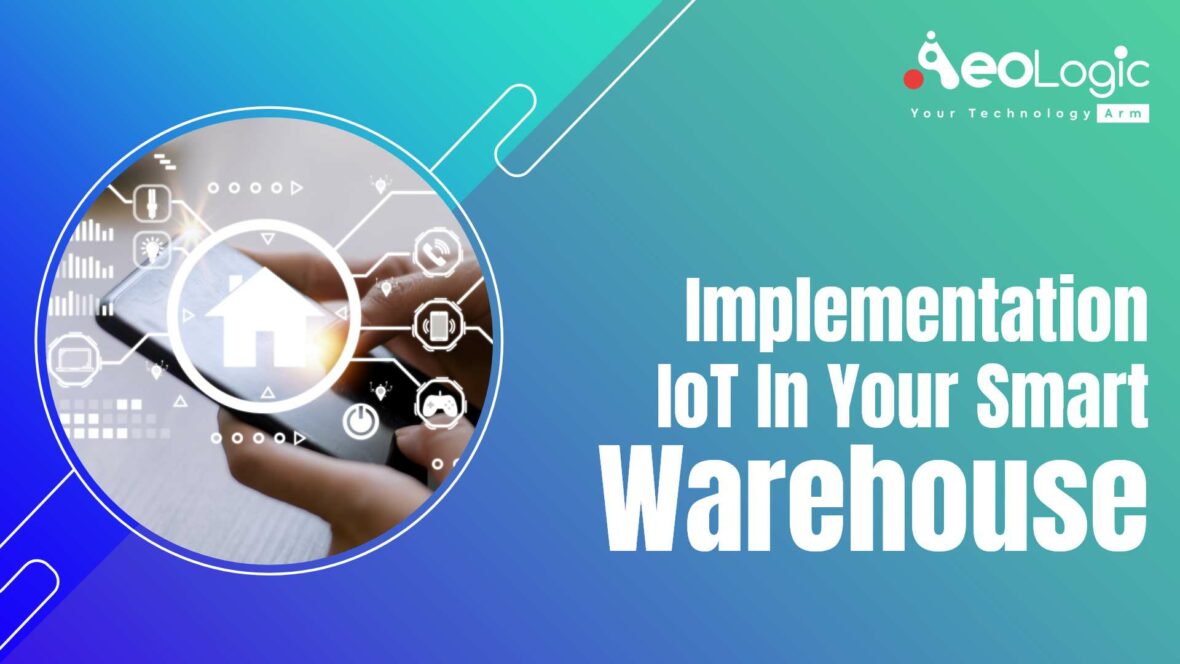The article discusses the implementation of IoT in a smart warehouse. It highlights the various benefits of implementing IoT in a warehouse and explains how it can be used to improve the efficiency of warehouse operations. The article also provides a step-by-step guide on how to implement IoT in a smart warehouse.
Introduction: IoT in Your Smart Warehouse
The internet of things, or IoT, is a system of interconnected devices and sensors that can collect and exchange data. IoT can be used in a variety of settings, including warehouses. By connecting devices and sensors in a warehouse, you can create a smart warehouse that can improve efficiency and productivity.
There are a number of benefits to using IoT in a warehouse. If you’re considering implementing IoT in your warehouse, there are a few things to keep in mind.
First, you’ll need to choose the right IoT platform. There are a number of different platforms available, so it’s important to select one that meets your specific needs.
Second, you’ll need to select the right sensors and devices. Again, there are a number of different options available, so it’s important to select the ones that will best meet your needs.
Finally, you’ll need to develop a plan for how you’ll use the data collected by the IoT system. This data can be used to improve a variety of different aspects of your warehouse, so it’s important to have a clear idea of how you want to use it before you get started.
If you’re looking to improve your warehouse with IoT, we can help. We offer a variety of different services, including platform selection, device selection, and data analysis. Contact us today to learn more about how we can help you implement IoT in your warehouse.
Also Read: How To Implement IoT in Your Business and Why It Matters?
Benefits of using IoT in your Smart warehouse
This technology has the potential to revolutionize the way businesses operate, by providing real-time data and insights that can help improve efficiency and optimize operations.
One of the industries that is starting to adopt IoT is the warehousing industry. Smart warehouses are using IoT to track inventory, monitor equipment, and automate tasks. This article will explore the benefits of using IoT in your smart warehouse.
One of the biggest benefits of using IoT in your warehouse is the ability to track inventory in real-time. IoT devices can be used to track the location of products and items within the warehouse. This information can be used to improve stock management and ensure that products are always available when needed.
Another benefit of using IoT in your warehouse is the ability to monitor equipment. IoT devices can be used to monitor the performance of machinery and equipment. This information can be used to improve maintenance schedules and prevent downtime.
Another benefit of using IoT in your warehouse is the ability to automate tasks. IoT devices can be used to automate tasks such as reordering inventory, scheduling maintenance, and generating reports. This can help to improve efficiency and free up time for employees to focus on other tasks.
Overall, the benefits of using IoT in your warehouse are numerous. IoT can help to improve efficiency, optimize operations, and provide real-time data and insights. If you are considering implementing IoT in your warehouse, these are some of the benefits that you can expect.
Get in touch with us to know more about IoT Solutions.
How to implement IoT in your smart warehouse
The internet of things, or IoT, is one of the hottest topics in the business world today. And for good reason. IoT has the potential to transform the way businesses operate, by providing real-time data and insights that can help organizations make better decisions, improve efficiency, and boost profits.
One area where IoT is particularly well-suited is the warehouse. A warehouse is a complex environment, with a lot of moving parts literally. Inventory has to be received, stored, and shipped out, often on tight deadlines. And all of this has to be coordinated and managed so that the right products end up in the right place at the right time.
Also Read: Role and Impact of IoT Technologies in the Education Industry
The challenges of implementing IoT in your smart warehouse
The challenges of implementing IoT in your smart warehouse are many and varied. Here are just a few of the challenges you may face:
1. Cost
IoT implementation can be expensive. You need to factor in the cost of sensors, devices, and the infrastructure to support them.
2. Complexity
IoT can be complex, particularly when you are dealing with a large number of sensors and devices. You need to have a clear understanding of how they all work together and how they will interact with your existing systems.
3. Security
IoT devices are often connected to sensitive data. This data must be properly secured to avoid breaches.
4. Interoperability
IoT devices from different manufacturers often do not work together. This can make it difficult to get the full benefits of IoT.
5. Privacy
IoT devices often collect data about people and their habits. This data must be properly protected to avoid privacy breaches.
5. The future of IoT in your smart warehouse
The future of the internet of things in the smart warehouse is looking very promising. With the rapid advancement of technology, the potential for the internet of things in the warehouse is growing exponentially. There are many different applications for the internet of things in the smart warehouse, and the possibilities are endless.
Also Read: Here’s How IoT can Manage EV Transition in India
Applications for the IoT in the Smart Warehouse
Some of the potential applications for the internet of things in the smart warehouse include:
1. Automated inventory management
With the help of sensors and RFID tags, the internet of things can be used to automatically track inventory levels in the warehouse. This information can be used to reorder stock when it gets low, or to track the movement of inventory throughout the warehouse.
2. Automated picking and packing
The internet of things can also be used to automate the picking and packing process in the warehouse. This would involve the use of sensors to track the location of items in the warehouse, and then robots to pick and pack the items. This would greatly reduce the amount of time and labor required to pick and pack orders.
3. Automated shipping
Once the orders have been picked and packed, the internet of things can be used to automate the shipping process. This would involve the use of sensors to track the location of the orders in the warehouse, and then robots to load the orders onto the shipping trucks. This would greatly reduce the amount of time and labor required to ship orders.
Also Read: Top IoT Solutions That Can Enhance Your Guest Experience
4. Predictive maintenance
The internet of things can also be used to predict when maintenance will be required on warehouse equipment. This would involve the use of sensors to track the performance of the equipment, and then using predictive analytics to determine when maintenance will be required. This would help to prevent equipment downtime, and would reduce the amount of time and labor required to perform maintenance.
5. Energy management
The internet of things can also be used to manage the energy usage in the warehouse. This would involve the use of sensors to track the energy usage of the warehouse, and then using predictive analytics to determine when energy usage is high. This would help to reduce energy costs, and would also help to reduce the carbon footprint of the warehouse.
Also Read: IoT in Agriculture: Cultivating Productivity with Smart Farming
Conclusion
IoT has the potential to completely revolutionize the way we interact with our surroundings. The ability to connect devices and systems to the internet has already led to massive advancements in various industries, and the warehouse sector is no exception. In this paper, we have explored the potential for implementing IoT in your smart warehouse. We have seen that there are a number of ways in which IoT can be used to improve warehouse operations.
Keeping your fulfillment process steady is made easier with the use of technology for effective automation solutions in your business. Get in touch with Aeologic Technologies right away to see how it can benefit your company.
Also Read: 10 Ways to Use Artificial Intelligence to Improve Business Processes
Related Blogs:
- How AI/ML Can Change the Public Transportation Industry
- Transforming Business With Digital Technology in the Oil Palm Industry in India
- Importance of Digital Asset Management in the Retail Industry
- How AI is Transforming the Agriculture Industry
- 10 Ways to Use Artificial Intelligence to Improve Business Processes
- The Future of IoT Technology in Convenience Stores
- Building Manufacturing Resilience Through AI and ML






